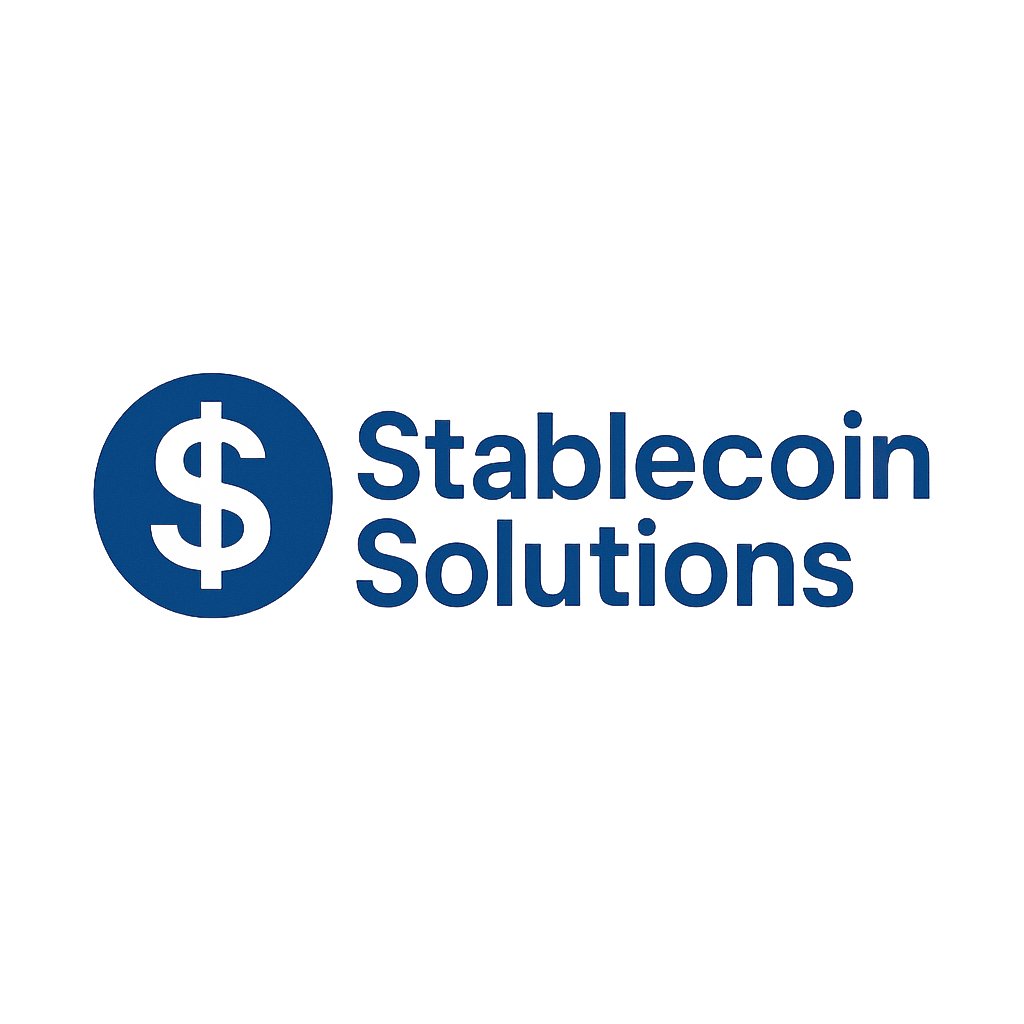Stablecoin Solutions Newsletter: Vol. 1: The Evolution of Stablecoins: From Early Innovations to the GENIUS Act Era
Stablecoins are a class of cryptocurrencies designed to maintain a stable value by pegging to an external reference—typically a fiat currency like the U.S. dollar. They aim to combine the efficiency, programmability, and decentralization of digital assets with the stability and trust associated with traditional money. #StablecoinSolutions #Stablecoins #GENIUSAct

2/ In the volatile world of crypto, where the price of Bitcoin or Ether can swing dramatically within hours, stablecoins serve as a reliable medium of exchange and store of value. Over the past decade, they have evolved from niche blockchain experiments to systemically important financial instruments. Today, they facilitate billions of dollars in daily trading volume, power decentralized finance (DeFi) platforms, enable cross-border payments, and provide a digital alternative to cash in inflation-stricken economies.
This paper traces the historical and technical evolution of stablecoins from their early designs in 2014 to their current mainstream adoption, culminating in the passage of the Guiding and Establishing National Innovation for U.S. Stablecoins (GENIUS) Act in 2025. It also explores global regulatory responses and highlights the innovations, risks, and opportunities associated with digital dollars.
3/ I. Early Stablecoin Innovations (2014–2016)
BitUSD: The First Stablecoin (2014)
The first functioning stablecoin was BitUSD, launched on July 21, 2014, on the BitShares blockchain. It was envisioned by Dan Larimer and Charles Hoskinson, both of whom later played major roles in developing EOS and Cardano.
BitUSD used the BitShares token (BTS) as collateral. Users could lock BTS in smart contracts to mint BitUSD, with the goal of maintaining a 1:1 peg to the U.S. dollar. The system relied on arbitrage and market confidence to maintain its value. However, by 2018, due to the volatility of BTS and a lack of sustained demand, BitUSD lost its peg and never recovered.
4/ NuBits (USNBT): Another Early Attempt
NuBits launched in 2014 as another early stablecoin. Though it claimed to be backed by reserves, it lacked clear and diversified collateral mechanisms. As crypto markets declined, confidence eroded, and NuBits lost its dollar peg, eventually trading at just a fraction of its intended value. Its collapse, like BitUSD's, underscored the weaknesses in relying on unstable assets for price stability.
5/ Tether (USDT): The Fiat-Backed Model
Also in 2014, RealCoin was introduced, later rebranded as Tether (USDT). Unlike earlier models, Tether took a fiat-backed approach: every USDT token would be backed 1:1 by U.S. dollar reserves held by the issuer.
Launched on the Omni Layer protocol on the Bitcoin blockchain, Tether was quickly adopted by exchanges due to its simplicity and usability. It became the leading stablecoin by market cap and volume. This centralized model set the foundation for future fiat-backed digital dollar systems.
6/ Stablecoin Expansion and the Rise of Digital Dollars (2017–2020)
MakerDAO and the Introduction of DAI (2017)
In December 2017, MakerDAO launched DAI, a decentralized stablecoin on Ethereum. Unlike fiat-backed coins, DAI was over-collateralized using crypto assets like Ether. To mint DAI, users deposited ETH into smart contracts called vaults, with a required collateralization ratio of at least 150 percent.
This design helped manage volatility: if the value of the collateral dropped below safety thresholds, the system would automatically liquidate assets to maintain stability. DAI later added new collateral types, such as wrapped Bitcoin (WBTC) and USDC. It became a key component of the DeFi ecosystem and proved that a decentralized stablecoin could sustain its peg under stress.
7/ Fiat-Backed Stablecoins Gain Ground (2018–2019)
Following Tether’s dominance, new fiat-backed stablecoins emerged, emphasizing transparency and regulation:
USD Coin (USDC), launched in September 2018 by Circle and Coinbase, provided monthly attestation reports and operated under U.S. regulatory frameworks.
TrueUSD (TUSD), released by TrustToken, used escrow accounts and third-party verification.
Paxos Standard (PAX), later rebranded as USDP, was regulated by the New York Department of Financial Services.
These issuers focused on compliance, liquidity, and transparency, creating trust with users and institutional partners. By the end of 2020, USDC had become the second-largest stablecoin behind USDT.
8/ Libra: A Regulatory Turning Point
In 2019, Facebook proposed Libra, a global stablecoin backed by a basket of fiat currencies and governed by the Libra Association. The goal was to facilitate frictionless global payments through Facebook’s apps.
Governments and central banks swiftly opposed the plan, raising concerns over monetary sovereignty, privacy, and financial stability. Libra was eventually restructured, rebranded as Diem, and ultimately shut down in 2022.
However, Libra’s short life had lasting consequences: it catalyzed stablecoin regulation worldwide and accelerated central banks’ exploration of digital currencies.
9/ Market Maturity and the Case for Regulation
Explosive Growth in the Early 2020s
By early 2019, the total stablecoin market capitalization was around $5 billion. By the end of 2020, it had reached $28 billion, and by early 2024, surpassed $150 billion.
The drivers of this growth included:
Use in crypto trading pairs (e.g., BTC/USDT)
Liquidity provision in DeFi protocols
Use as remittance and savings tools in developing markets
Demand for digital dollars during times of fiat instability
Stablecoins were now embedded in the financial architecture of both centralized and decentralized markets.
10/ Emerging Risks and Red Flags
Despite their growing utility, stablecoins introduced new risks:
Tether faced repeated scrutiny for inadequate reserve transparency. It reached a settlement with the New York Attorney General in 2021, agreeing to improve disclosures.
TerraUSD (UST), an algorithmic stablecoin, collapsed in May 2022, wiping out over $40 billion in market value and triggering industry-wide contagion.
In March 2023, USDC temporarily depegged to $0.88 after Silicon Valley Bank, one of its reserve banks, collapsed. USDC later recovered, but the episode highlighted exposure to the banking system.
These incidents signaled the need for structured, enforceable regulation to ensure consumer protection and financial stability.
11/ The GENIUS Act and the Future of Regulated Stablecoins
Legislative Journey (2022–2025)
Between 2022 and 2025, U.S. lawmakers debated several versions of federal stablecoin legislation. With growing pressure from industry leaders, international regulators, and central banks, Congress passed the GENIUS Act in July 2025. It became the first comprehensive federal law governing payment stablecoins in the United States.
This regulatory framework offers a balance between fostering innovation and protecting the public, giving banks, fintechs, and crypto firms a clear path to issue compliant digital dollars.
12/ Conclusion
Stablecoins have come a long way since the early days of BitUSD and NuBits. What began as experiments in collateral and code are now instruments used daily by millions of people and institutions around the world.
The GENIUS Act represents a shift in how the United States approaches financial innovation: no longer ignoring or resisting digital assets, but integrating them into a supervised, rules-based financial system. As adoption grows and the technology matures, stablecoins are likely to become a foundational layer of both crypto and traditional finance.
The next decade will likely see stablecoins used not just for crypto trading, but for payroll, remittances, commerce, and even cross-border settlement—bringing the vision of frictionless digital dollars closer to reality.
9.55K
6
The content on this page is provided by third parties. Unless otherwise stated, OKX is not the author of the cited article(s) and does not claim any copyright in the materials. The content is provided for informational purposes only and does not represent the views of OKX. It is not intended to be an endorsement of any kind and should not be considered investment advice or a solicitation to buy or sell digital assets. To the extent generative AI is utilized to provide summaries or other information, such AI generated content may be inaccurate or inconsistent. Please read the linked article for more details and information. OKX is not responsible for content hosted on third party sites. Digital asset holdings, including stablecoins and NFTs, involve a high degree of risk and can fluctuate greatly. You should carefully consider whether trading or holding digital assets is suitable for you in light of your financial condition.

